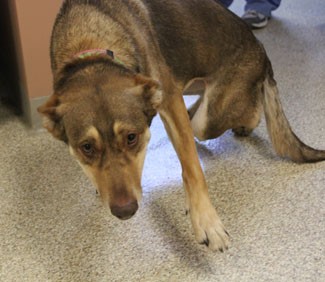Every dog or cat will at some point limp or appear to be lame. Most of the time it’s nothing to worry about, but sometimes it can be an early sign of some very serious issues. If you see your furry friend develop a little limp or sensitivity in his legs or feet, it’s best to have it checked by a veterinarian.
Here are some things to consider if your pet experiences lameness:
1. Ouch, I got bitten by a tick! One of the first signs that your dog has been bitten by a tick carrying Lyme disease or other “tick-borne” diseases is lameness. Don’t be fooled if the limp changes from one leg to another – this often happens when lameness caused by one of these diseases.
Luckily, cats are resistant to most common forms of diseases caused by ticks.
2. Minor symptom, serious sickness. Some common tumors and diseases of the immune system can cause lameness. A pet is very likely to begin favoring the affected limb or limbs not only to reduce pain, but to shift weight to the unaffected legs so they can continue to walk, run, and function normally (pets always try to compensate to maintain an appearance of feeling normal – it’s an instinctual holdover from their days in the wild).
3. I’m getting old and need a little help. Arthritis is very common among older pets and just like people, pets start to limp and favor the affected limb. Your veterinarian has many medications and may have other treatment recommendations, such as a weight loss, physiotherapy, or even acupuncture , if appropriate, to help make an arthritic dog or cat more comfortableand possibly slow down the progression of the disease.
 4. Sorry, I was born this way. Many dogs will manifest lameness because they are genetically predisposed to certain conditions such as hip dysplasia, elbow and knee malformation. Cats can also suffer from similar problems, though not as often as dogs. Your veterinarian can make many recommendations to help should your pet be affected by any of these conditions. Also, if you are considering acquiring a new pet, your veterinarian can make specific recommendations to help avoid acquiring a pet with these problems.
4. Sorry, I was born this way. Many dogs will manifest lameness because they are genetically predisposed to certain conditions such as hip dysplasia, elbow and knee malformation. Cats can also suffer from similar problems, though not as often as dogs. Your veterinarian can make many recommendations to help should your pet be affected by any of these conditions. Also, if you are considering acquiring a new pet, your veterinarian can make specific recommendations to help avoid acquiring a pet with these problems.
5. I over did it. Perhaps the most common cause of lameness is rough play and over exertion. And while those twists and bumps will usually heal on their own, sometimes they cause more serious problems that need treatment by a veterinarian, including conditions like a torn ACL (anterior cruciate ligament). Also, try to avoid encouraging your dog to jump high to catch balls, frisbees, and other toys, as this is a leading cause of injury. Rather, toss toys away from your pet at a low height and on a relatively even surface.
6. Yikes, that hurt! Unfortunately, our pets are occasionally receive injuries that result in lameness. think it might be as simple as a broken toe nail, or a thorn or other foreign object embedded in their paw. Avery common cause of limping in outdoor cats is a bite wound that you might not even notice until it forms an abscess. Being hit by a car is also a possibility to consider when a pet returns home lame.
The next time you see your best friend limping, pay close attention and give your veterinarian a call to be sure it’s nothing to worry about.
If you have any questions or concerns, you should always visit or call your veterinarian – they are your best resource to ensure the health and well-being of your pets.
